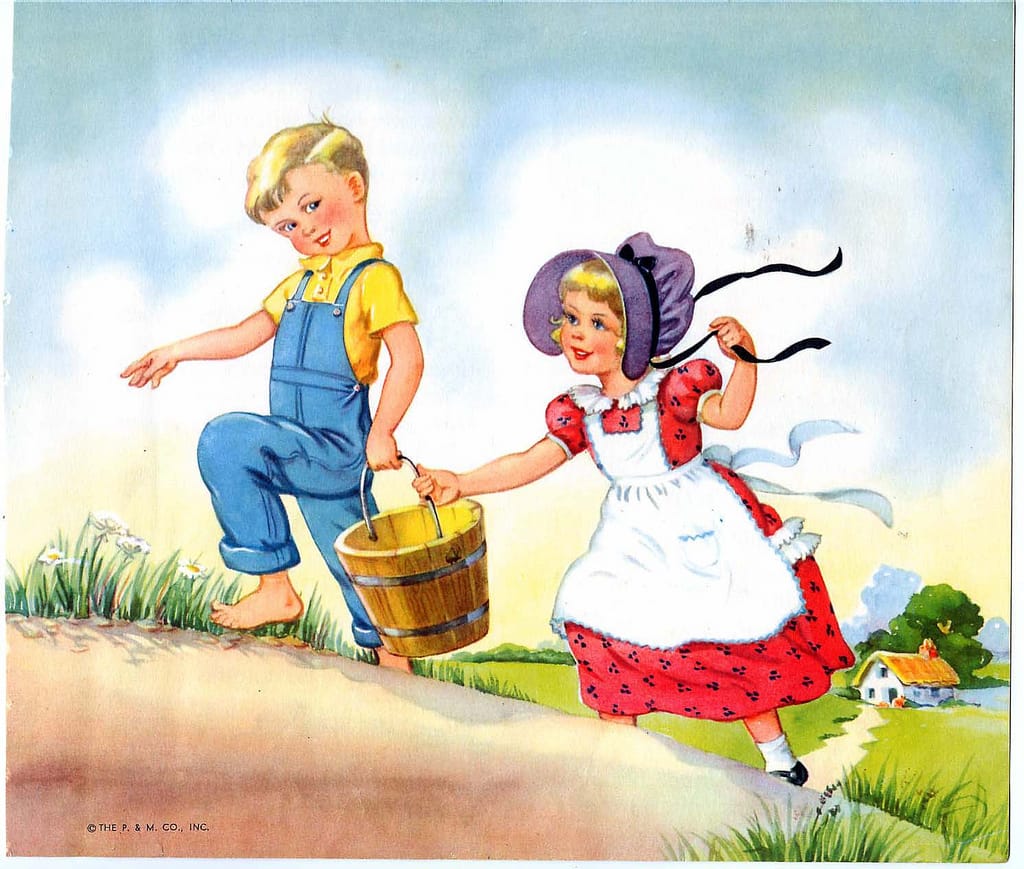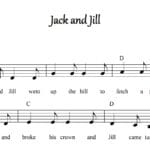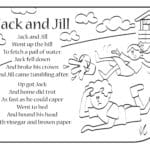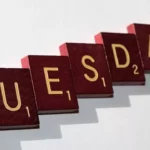We all know the classic nursery rhyme “Jack and Jill.” It’s a simple story, familiar to generations. But have you ever wondered about the meaning behind the Jack and Jill lyrics? There might be more to this childhood tune than meets the eye.
Unraveling the Rhyme’s History and Meaning
The first printed version of these lyrics dates back to 1765 in England. Its origins, however, remain a mystery. Some speculate about ties to old Norse myths, while others believe it reflects real-life events.
On the surface, the Jack and Jill lyrics tell a straightforward tale: two children go up a hill for water, Jack falls, and Jill tumbles after him. A simple accident, perhaps? Over the years, people have found deeper meanings woven within the lines.
Some see it as a lesson in perseverance, suggesting that even after a fall, we should get back up and try again. Others view it as a metaphor for life’s ups and downs, reminding us that challenges and stumbles are inevitable. It could also simply reflect the joys and perils of childhood, a nostalgic glimpse into carefree days.
The truth is, the original author’s intention remains unknown, adding to the rhyme’s allure. Its openness to interpretation allows each person to find personal meaning in the words.
Regardless of its true meaning, the cultural impact of the Jack and Jill lyrics is undeniable. They’ve become ingrained in our society, appearing in books, movies, TV shows, and songs. This attests to the power of simple storytelling and its ability to resonate across generations.
The mystery surrounding the rhyme’s origins adds to its intrigue. Without concrete evidence, we’re left to speculate and explore different theories. This encourages critical thinking, consideration of historical context, and an appreciation for the depth hidden within seemingly simple words.
For example, some historians suggest the rhyme might reflect the high childhood mortality rates prevalent in the 18th century. Fetching water was a common but dangerous task for children, and accidents were commonplace. This interpretation casts a more somber tone on the rhyme, perhaps serving as a reminder of life’s fragility and the importance of resilience.
Ultimately, the meaning of the Jack and Jill lyrics is subjective. Whether you see it as a lighthearted children’s rhyme, a profound metaphor, or something else entirely, this timeless tale continues to capture our imaginations.
Exploring “Jack and Jill” with Kids
Let’s talk about nursery rhymes, specifically the classic “Jack and Jill.” It’s a beloved children’s rhyme, likely sung by you as a child and now, perhaps, to your own children. But what makes this rhyme so special?
Here’s the rhyme itself:
Jack and Jill went up the hill,
To fetch a pail of water.
Jack fell down and broke his crown,
And Jill came tumbling after.Up Jack got, and home did trot,
As fast as he could caper,
He went to bed to mend his head,
With vinegar and brown paper.
Straightforward, right? Two kids, a hill, a water mishap. A simple story even the youngest can follow.
But like many nursery rhymes, there might be more to “Jack and Jill” than meets the eye. Some believe it has roots in historical events, possibly even a tale about taxes. Others find connections to Norse mythology. The truth is, the rhyme’s origins are shrouded in mystery, lost to time.
This mystery adds to the rhyme’s fascination! We can all have our own interpretations and theories. On the surface, it’s a simple accident. But a deeper look might reveal lessons about perseverance (Jack got back up!), consequences (perhaps they should have been more careful), and helping others (Jill aided Jack despite her own tumble).
Even without the mystery and possible hidden meanings, “Jack and Jill” is a valuable tool for children’s learning and development. Its simple structure and repetition aid memorization, boosting language skills. The story encourages thinking about cause and effect (Jack’s fall broke his crown) and sequencing (first the hill, then Jack’s fall, then Jill’s). It also introduces empathy – children can imagine how Jack and Jill felt and discuss helping each other.
The best part? There are countless fun ways to bring “Jack and Jill” to life! Sing it together, act it out, draw pictures, or create your own versions. Build a pretend hill out of pillows and let children re-enact the story (with a soft landing, of course!). The possibilities are endless!
“Jack and Jill” has stood the test of time for a reason. It continues to entertain, educate, and spark imagination in children and adults alike.
Delving into the Darker Theories of “Jack and Jill”
We’ve established that “Jack and Jill” is a seemingly innocent children’s rhyme. But what if it holds a deeper, darker meaning?
Throughout history, people have found hidden meanings in stories and rhymes, and “Jack and Jill” is no exception. Some believe it’s not about children and a water pail at all, but a clever way to discuss historical events or political ideas disguised as a children’s rhyme.
One popular theory links “Jack and Jill” to the French Revolution. Jack might represent King Louis XVI, known for his extravagant spending, and Jill, his equally lavish queen, Marie Antoinette. Their “fall” could symbolize their downfall during the revolution, with the “broken crown” referencing Louis XVI’s execution.
It’s crucial to remember this is just a theory. There’s no concrete proof linking “Jack and Jill” to the French Revolution, but it’s a fascinating possibility. It demonstrates how a simple rhyme can spark diverse interpretations and discussions.
Another theory suggests the rhyme is a commentary on taxes. Jack and Jill represent the common people, the hill represents the burden of taxation, and the crown (or pail of water) symbolizes the wealth they strive for but are constantly pushed down from obtaining.
Of course, some believe “Jack and Jill” is simply a children’s rhyme with no hidden meaning, created to entertain and teach about helping each other. This is entirely possible too!
The truth is, we may never know the true meaning behind “Jack and Jill.” Its meaning has likely evolved over generations. But that’s part of its intrigue. It’s a rhyme enjoyed on a simple level by children, yet it also inspires deeper thought and discussion among adults.
Unraveling the Legend of Jack and Jill
Let’s delve deeper into the popular theories surrounding this seemingly simple rhyme. One theory connects the legend of Jack and Jill to an actual event in 18th century England. Imagine a young couple, Jack and Jill, living in a small town. They go up a hill to fetch water, as was customary, but tragedy strikes! Jack falls and cracks his head open. Jill, trying to help, rushes to him but stumbles and falls as well.
Another theory links Jack and Jill to the French Revolution. Some believe they symbolize King Louis XVI and Marie Antoinette, with the hill representing the monarchy and the water symbolizing the French people. Their fall mirrors the monarchy’s downfall during the revolution.
The fascinating aspect is that no one knows for sure what the rhyme really means. It’s a puzzle everyone can try to solve in their own way, sparking our imagination and prompting us to think critically.
Whether rooted in a true story or cloaked in historical symbolism, the legend of Jack and Jill has resonated for generations. It subtly teaches us about the potential consequences of taking risks, the importance of helping others, and the spirit of never giving up, even when we stumble and fall.
Key Points of Jack and Jill Lyrics Analysis:
- Origin: First appeared in print in England in 1765, with unknown origins.
- Surface Story: Two children (Jack and Jill) fetching water from a hill, with Jack falling and Jill following.
- Hidden Meanings:
- Perseverance: Encourages resilience in the face of setbacks.
- Life’s Ups and Downs: Symbolizes challenges and stumbles that are part of life.
- Childhood Joys and Perils: Reflects carefree outdoor play and possible accidents.
- Cultural Impact: Widely recognized and integrated into various forms of media.
- Open to Interpretation: Allows for individual perspectives on its meaning.
- Historical Context: Possibly reflects high childhood mortality rates in the 18th century, with water fetching being a dangerous task for children.
- Intrigue and Speculation: Lack of concrete evidence encourages theories and critical thinking.
By incorporating these key points and expanding upon the various interpretations, you can create a comprehensive and engaging article that explores the depth and enduring appeal of the “Jack and Jill” nursery rhyme.
















